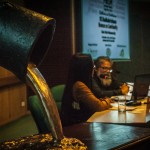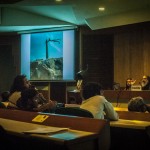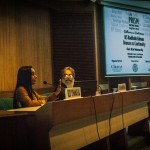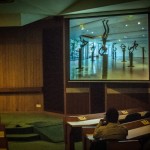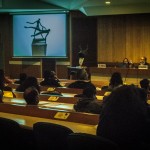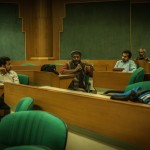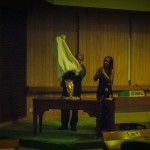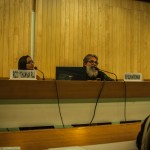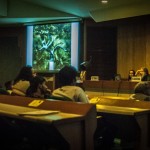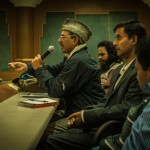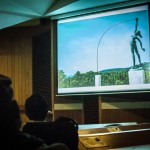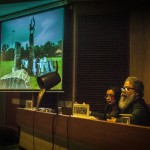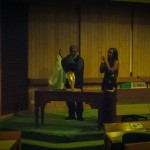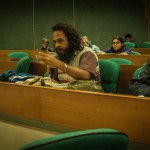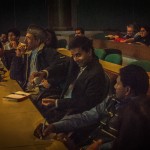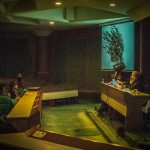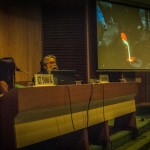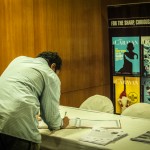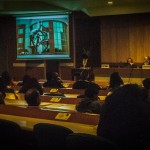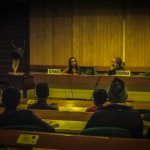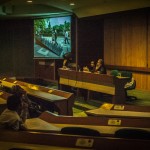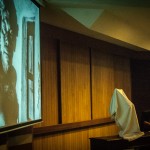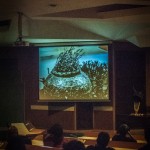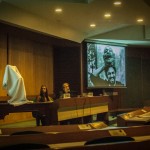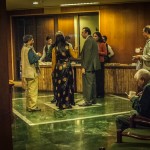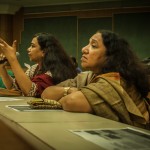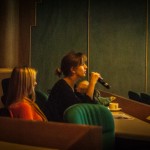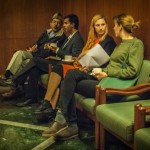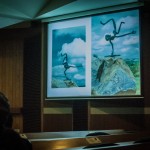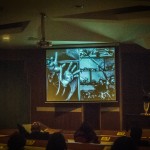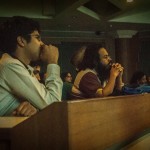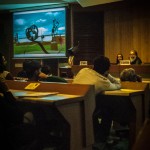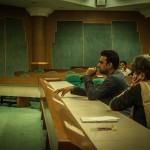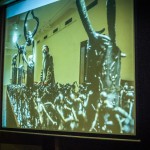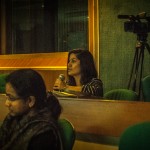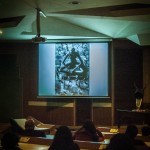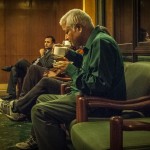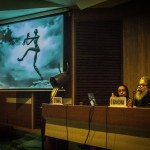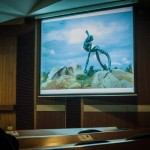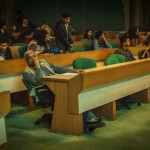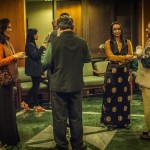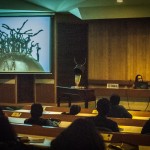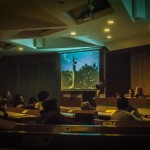© LILA Foundation
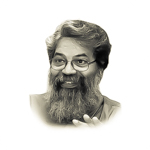 KS Radhakrishnan is recognised as one of the most significant figures in contemporary Indian art. He is a sculptor and bronze has remained his prominent medium for a long time. A native of Kottayam in Kerala, he pursued his formal training in art from the prestigious Kala Bhavan of Vishwabharati University, where he was mentored and trained by two important figures of Indian modernism, Ramkinkar Baij and Sarbari Roy Chowdhury. He was awarded with the National Scholarship offered by the Government of India in 1978, at 22 years old. Radhakrishnan completed his MFA in 1981 and soon was awarded with a research grant by the Lalit Kala, Delhi to work in Garhi Village, New Delhi. This also gave him an opportunity to move to the capital and explore the diverse artistic practices of the metropolis. Since then, he has held more than fifteen solo shows including shows at the Centre des Bonds de Marne, LePerreux-Brysur-Marne (France), the Lalit Kala Akademi (New Delhi) and at the Birla Academy of Art and Culture (Kolkata), amongst others. Among the numerous group shows in which his works have been exhibited are the National Exhibition at New Delhi (1980); Triennalle India (1990); Salon International de la Sculpture Contemporaine at Nouveau Forum des Halles, Paris (1995); Hippodrome de Longchamp, Paris (1996); Espace Michel Simon-Noisy le grand, France (1996), Beijing Biennale (2012). From the 1980’s onwards Radhakrishnan has installed open-air sculptures across the country and abroad including at the TMI foundation, Cotignac, France.
KS Radhakrishnan is recognised as one of the most significant figures in contemporary Indian art. He is a sculptor and bronze has remained his prominent medium for a long time. A native of Kottayam in Kerala, he pursued his formal training in art from the prestigious Kala Bhavan of Vishwabharati University, where he was mentored and trained by two important figures of Indian modernism, Ramkinkar Baij and Sarbari Roy Chowdhury. He was awarded with the National Scholarship offered by the Government of India in 1978, at 22 years old. Radhakrishnan completed his MFA in 1981 and soon was awarded with a research grant by the Lalit Kala, Delhi to work in Garhi Village, New Delhi. This also gave him an opportunity to move to the capital and explore the diverse artistic practices of the metropolis. Since then, he has held more than fifteen solo shows including shows at the Centre des Bonds de Marne, LePerreux-Brysur-Marne (France), the Lalit Kala Akademi (New Delhi) and at the Birla Academy of Art and Culture (Kolkata), amongst others. Among the numerous group shows in which his works have been exhibited are the National Exhibition at New Delhi (1980); Triennalle India (1990); Salon International de la Sculpture Contemporaine at Nouveau Forum des Halles, Paris (1995); Hippodrome de Longchamp, Paris (1996); Espace Michel Simon-Noisy le grand, France (1996), Beijing Biennale (2012). From the 1980’s onwards Radhakrishnan has installed open-air sculptures across the country and abroad including at the TMI foundation, Cotignac, France.
Rizio Yohannan Raj, Executive Director of LILA, chaired the lecture and moderated the discussion. She is a bi-lingual writer and educationist. Her works include three collections of poetry in English: Eunuch (2010), Naked by the Sabarmati and Other Guna Poems (2012) and Exchanges with the Thinker (2013). She is also the author of two novels in Malayalam (Avinasom and Yatrikom), the first of which is translated into English as A Tale of Things Timeless (2012). Her academic works include a pioneering volume on Comparative Literature, Quest of a Discipline: New Academic Directions for Comparative Literature (2012).

© LILA Foundation
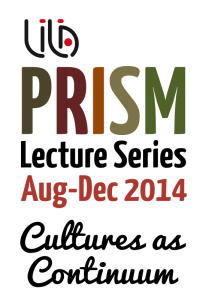 The lecture: Aeschylus called ‘bronze’ the mirror of the ’form’ – a material capable of reflecting and revealing a form, and its meaning. But how does an artist portray the dynamism of the human spirit and the speed of time with this heavy metal? How does a sculptor represent the human aspiration for lightness with it? Bronze as Continuity takes us on a journey through the speaker’s works, to demonstrate, how, paradoxically, the very gravity of the material that keeps a bronze sculpture rooted to the ground, indeed makes it possible, too, to throw a high figure of joy into the air. This also explains how he has chosen to stick to this medium, forming a strong bond between his artist’s self and his material. Now, is it just a medium for the artist’s self expression? How does he use this material to connect with the world about him? How does he communicate with ‘time’ through this ancient material? How does he construct and move history in his own time and space using this medium?
The lecture: Aeschylus called ‘bronze’ the mirror of the ’form’ – a material capable of reflecting and revealing a form, and its meaning. But how does an artist portray the dynamism of the human spirit and the speed of time with this heavy metal? How does a sculptor represent the human aspiration for lightness with it? Bronze as Continuity takes us on a journey through the speaker’s works, to demonstrate, how, paradoxically, the very gravity of the material that keeps a bronze sculpture rooted to the ground, indeed makes it possible, too, to throw a high figure of joy into the air. This also explains how he has chosen to stick to this medium, forming a strong bond between his artist’s self and his material. Now, is it just a medium for the artist’s self expression? How does he use this material to connect with the world about him? How does he communicate with ‘time’ through this ancient material? How does he construct and move history in his own time and space using this medium?
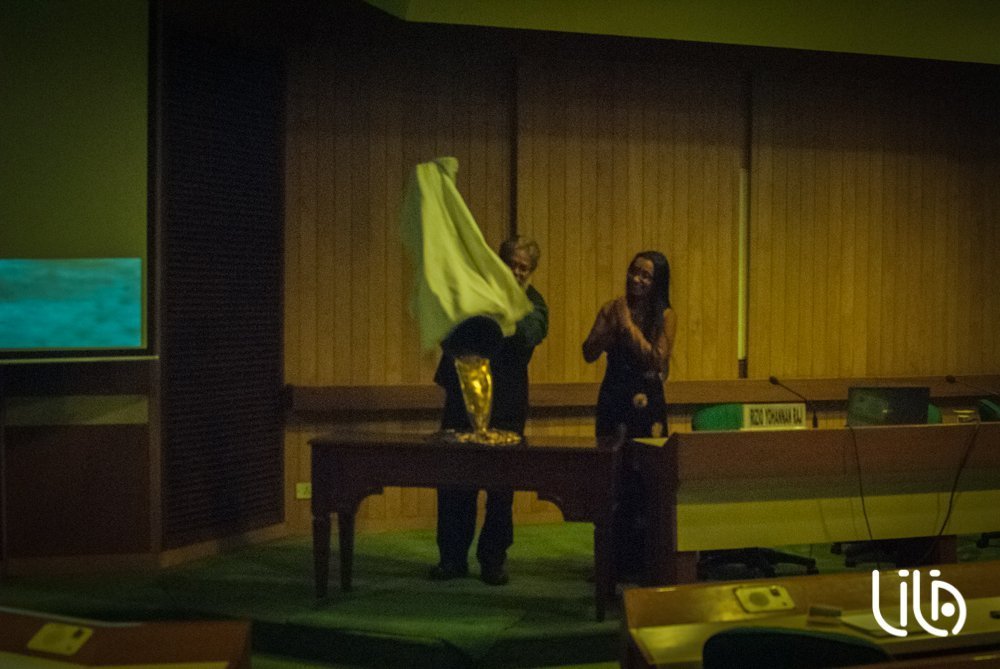
© LILA Foundation
The sculpture becomes. Here is one idea, one paradox that resonated through Gulmohar Hall, India Habitat Centre, New Delhi, on the evening of December 4th, as sculptor KS Radhakrishnan invited a large and diverse audience through the journey of four decades of works. A hypnotising journey, when Radhakrishnan, screening through hundreds of artefacts, builds almost inadvertently on all that sculpture, and more specifically bronze, can tell us about creation, art, culture, politics and governance. “The sculpture becomes!” – the wave of inspiration started in 1974, and it grew and disseminated to reach shores all over India and across the world. “I get all this energy simply by doing, by making sculptures. Energy is generated this way, as a flow. It is like a wave: by losing, it gains. It brings us to the next wave.”
In Santiniketan, Radhakrishnan discovers bronze from the work of his teachers. The metal is a costly one, but it is also a heavy material. Hard to carry, it permits the casting of larger-than-life models that surprisingly evoke great lightness of movement and spirit: a thin, short base is strong enough to support a larger body above it. Santiniketan is also the setting for a life-turning encounter: Musui. The young man, dwelling in the nearby village, accepts to pose for one of Radhakrishnan’s early castings. This lively, incredibly joyful and serene face will act like a muse for the sculptor. Musui, the male character, is soon rejoined by his female counterpart: Maiya. Same energy, same facial traits, same happiness. Radhakrishnan will sculpt happiness in all its forms. “I, too, am depressed at times! But then, I cast a happy character. This is one possible path back to happiness.”
And indeed, sculpture becomes. In 1996, Radhakrishnan is asked to cast a Kolkata-style rickshaw puller. The challenge is to liberate this profession from the climate of pity and throb that it instantaneously rhymes with. Looking for happiness in all the corners of life, Radhakrishnan was determined to make a happy puller: “twenty years had passed. But the model was evident to me: it had to be Musui.”
As Radhakrishnan visits and builds relations across the world, Musui and Maiya follow him. In the South of France, the sculptor sculpts abundantly, filling private gardens and public spaces. “And Musui and Maiya slowly became impish figures.” Each creation acts as a variation in the theme of cultures: “here, Maiya becomes a writer. There, Musui becomes Jesus, and on that one, he is the devil. There, she becomes an angel. Here, they are animals. He becomes a turtle. There, they are objects. He becomes a windmill. Or there, he becomes an arrow and a bow.”
The age-old bronze, first symbol of solidity and immobility, recalls each time of the fluidity of creation, of identity, of life. “The sculptures grow on their own. Once a year, I go to check that they are doing well. As the environment changes, some adaptations may be required: sometimes, I change their positions.” Movement after the creation, and movement within the creation. “Beyond everything, movement is my major interest.” Movement resonates across the works of Radhakrishnan: the elongated bodies, thrown in the air, are rarely, if ever, static. “Balancing the weight is not an issue. It is the visual that balances. Space is the medium in which the initial clay modelling is made,” the sculptor remarked. In space, movement is accommodated, nurtured, cherished.
As Radhakrishnan moves his Delhi studio from Saket to Chattarpur, a new style emerges, in parallel and in combination with the individual casts of Musui and Maiya. “Around me, I could witness a colony forming up. The phenomenon of the crowd came to the forefront for me.” “The Human Box,” a series of sculptures where crowds become the shapes of objects, of liquids, of movements, is elaborated as the sculptor enters this new scale of representation. Musui and Maiya are still present, as massive God-like figures in the middle of the masses, and more fundamentally, as models for each of the hundreds and thousands of tiny figurines. For his larger piece, The Ramp, Radhakrishnan works for two full years. From the individual to the universal: the sculpture bridged the gap.
Bringing the gap – the challenge of the public artist of today. The gap of social equity, when an attendee questioned Radhakrishnan on the paradoxes of an artistic creation aiming at being public, visible of all, while the very expensiveness of the material requires it to be placed in height, out of reach. “I am looking forward to our society, when bronze statues would be placed at the reach of everyone. I want people to touch my works. But it is a practical concern: many of my teachers’ bronze works have been stolen, as the bronze can be melted again and sold.” “It is also that art aims at bearing witness,” added Rizio Yohannan Raj, Chair of the evening. “Art is political in a different way. It needs to look at our world from a distance, from a certain height. It is meaningful inasmuch as it survives through time.”
Bringing gaps indeed – the gap between institutions and artists, across the economic reality of art, also. “A secretary of sculpture once came to me to request a work. ‘I have an idea’, he said. ‘Good, then! If you have an idea, I am not needed here,’ I replied.” To avoid the limitations of external demands, Radhakrishnan decided to remain free, and only cast public sculptures as donations. “As they were not paying me, I could remain independent on the entire project.” Private requests and patrons would come and complement this economy of art, allowing the artist to live of his work without compromising the ambition of his creations.
Closing an evening of inspiration, and a long and lively exchange session with the audience, Rizio Yohannan Raj presented a parallel: “the impish characters are cartoonish, and some of the sculptures using tiny figures look like pencil sketches from a distance.” They connect the fields – the fields of space, across the world, but also the fields of the manifold activities of human societies. “But from Radhakrishnan, one does not hear a proud discourse of connectivity, like in interdisciplinary academic research.” Radhakrishnan is there, sitting, acting a symbolic break, looking back at the thousands of hours of physical work in the studio. Like the wave of his sculptures, his smile is full of life but also imperturbable. An inspiring smile, a contagious one, reaching LILA itself intensely, intimately: next to Radha, his gift for the Foundation, another, massive smile – a flow of golden bronze coming out of a crucible, becoming the scary-playful face and tongue of the buffalo Mahisha. The sculpture’s title: Bronze as Continuity.
Samuel Buchoul



